Innovation
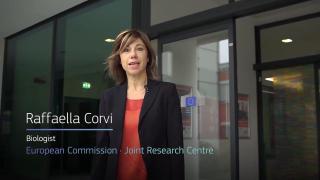
Projects and initiatives
HealthInnovationPolicy
EURL ECVAM
The EU Reference Laboratory for alternatives to animal testing (EURL ECVAM) promotes and facilitates the use of non-animal methods in testing and research. It validates, disseminates and shares knowledge on the 3Rs (Replacement, Reduction and Refinement of animal experiments). In this video, Raffaella Corvi explains what EURL ECVAM does in the field of safety testing of chemicals while reducing laboratory animal testing.
Watch the accessible version of the video here (https://audiovisual.ec.europa.eu/en/video/I-230374).
©European Union, 2021
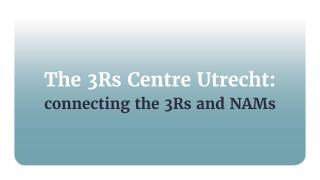
Expert interviews
Innovation
The 3Rs Centre Utrecht: connecting the 3Rs and the NAMs
This animation of the 3Rs Centre Utrecht shows the differences, but also the similarities, between the 3Rs (Replacement, Reduction, Refinement of animal testing) approach and the NAMs (New Approach Methodologies) approach when trying to replace or reduce experimental animal use.

Projects and initiatives
HealthToxicologyInnovationIn vitro
Cells4Thought: using iPSCs for neurodevelopmental health
The prevalence of neurodevelopmental disorders (NDDs), including cognitive impairments, is increasing worldwide with great impact on daily life quality. There is evidence that exposure to chemicals may contribute to the incidence of NDD. However, a causal link is lacking. Towards this goal, a human-relevant in vitro model system mimicking parts of brain development, such as neuronal network functioning, could be used for mechanistic research on how gene-environment interactions contribute to the development of NDD. This is going to be studied in the project Cells4Thought, using induced pluripotent stem cells form different individuals to study the effect of chemicals on neuronal differentiation.
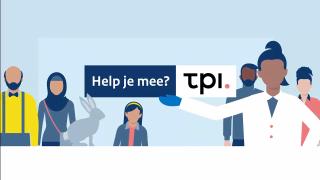
Projects and initiatives
HealthInnovationPolicyBeginner
We all want a safer world for humanity, animals and the environment: Transition Animal-free Innovation
Why is the transition to animal-free research so important? What are animal-free models? How does TPI (Transition Animal-Free Innovation) encourage their development and use? And who are we working with to make this happen? We explain this in our animation.
More and more animal-free tests and research methods are becoming available, but not all research questions or safety tests can be answered in this way yet. In addition, the validation, qualification and acceptance of non-animal innovations still lags behind. Therefore, the Dutch Ministry of Agriculture, Nature and Food Quality (LNV) stimulates the development and application of animal-free innovations. This is done with the partner programme Transition Animal-free Innovation (TPI).
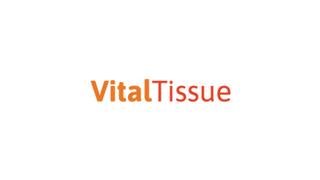
Projects and initiatives
HealthInnovationIn vitro
VitalTissue: scientific research can be more human(e)
The goal of VitalTissue is to facilitate the availability of vital human residual tissue for all researchers in the Netherlands. This video shows how VitalTissue works. From a request from a researcher, the donation of the residual tissue by the patient and the transport to the lab. This process is the result of a feasibility study conducted with many stakeholders. The national tissue bank ETB-BISLIFE will implement VitalTissue in practice.
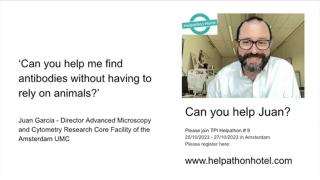
Questions
HealthInnovationIn vitro
Helpathon #9 – Can you help Juan?
Juan is an experienced immunologist and scientific director of the cutting edge O2Flow facility for cytometry and cell sorting at the Amsterdam VU University Medical Center. Can you help Juan explore if and how he can transition his facility towards animal free antibodies?
Are you using antibodies in your research do you want others to help you find animal free alternatives for your specific research let us know. More information can be found [here] (https://www.helpathonhotel.org/coming-up).
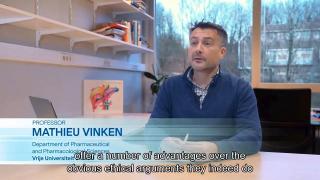
Innovation examples
HealthToxicologyInnovationIn vitro
Human based 3D liver models
Human-based in vitro models are increasingly being used in the hepatology field. And in addition to the obvious ethical arguments, they offer several advantages over the classical animal models. One of them is the ability to perform mechanistic research at the molecular level in a well-controlled setting and reduce species differences. These liver-based in vitro models can range from simple monolayer cultures of hepatocytes to the liver-on-chips systems in which all liver cells are cultured in a 3D configuration on a microfluidic platform. Liver-based in vitro models must be selected on a case-by-case basis and should fit the purpose of the research, which might go from fundamental to translational research.
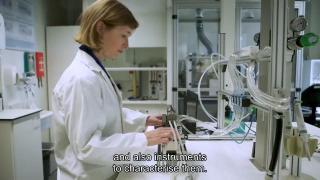
Innovation examples
HealthToxicologyInnovationIn vitro
Platform for in vitro airborne inhalation testing
The air-liquid interface (ALI) technique uses lung cells cultured on a tiny polymer membrane in a cup. On one side of the membrane is a liquid containing the medium necessary for the cells to survive, while the other side is in contact with air. This is similar to the situation in the human lung. The compound to be tested is administered via an aerosol, vapor, or gas to mimic the situation in human lungs. By monitoring different parameters in the cell model before and after the compound is added, it is possible to measure the effects on lung cells. Depending on the test to be carried out, the lung cells can come from different regions in the respiratory tract and even from a variety of people, including individuals who smoke a lot or have specific diseases such as chronic obstructive pulmonary disease or asthma.
In vitro ALI inhalation testing (https://doi.org/10.1021/acs.est.7b00493) adds value for e.g. pre-clinical trials and research in the pharmaceutical industry and testing (new) compounds for the chemical sector and beyond. The advantages of ALI inhalation testing are that it is a non-animal method, it reduces the use of in vivo experiments, pre-clinical testing with human-derived cell models is more realistic and limits clinical trial failures and it provides faster and more efficient testing of compound
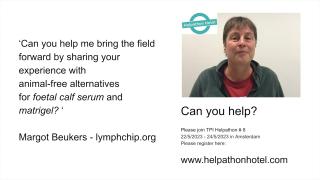
Questions
HealthInnovationIn vitro
Helpathon #8 – Can you help Margot?
Margot Beukers is the LymphChip program manager. Can you help Margot bring the field forward by sharing your experience with animal-free alternatives for Foetal Calf Serum and Matrigel?
Click on the link in the video to sign up and read more information on this Helpathon on the website (https://www.helpathonhotel.org/coming-up).
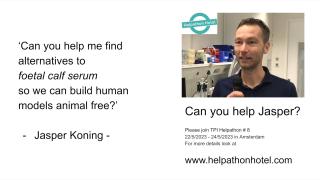
Questions
HealthInnovationIn vitro
Helpathon #8 – Can you help Jasper?
Jasper Koning is doing research on skin diseases. He believes it must be possible to find an alternative to Foetal Calf Serum to grow immune cells. Can you help him find alternatives to Foetal Calf Serum so he can build human models animal free? Jasper is especially looking for researchers with practical experience in applying alternatives. He did some trials himself with mixed results.
Click on the link in the video to sign up and read more information on this Helpathon on the website (https://www.helpathonhotel.org/coming-up).
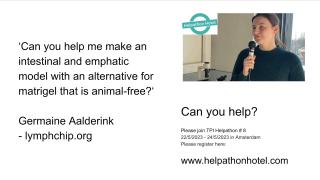
Questions
HealthInnovationIn vitro
Helpathon #8 – Can you help Germaine?
Germaine Aalderink is investigating the uptake of lipids travelling from the gut into the lymphatic system and further explore the merits of this alternative drug intake strategy. Can you help Germaine make an intestinal and lymphatic model with an alternative for Matrigel that is animal-free? She wants to know what components are essential in each phase of intestinal development and is interested in both the positive and negative experiences of other researchers with the use of alternatives for Matrigel.
Click on the link in the video to sign up and read more information on this Helpathon on the website (https://www.helpathonhotel.org/coming-up).
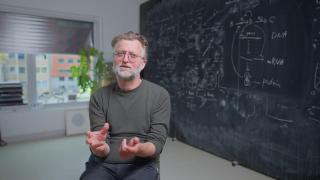
Innovation examples
HealthInnovationIn silico
Using data and computational modelling in biomedical research
Bioinformatics and systems biology hold great promise to translate the wealth of biological data into meaningful knowledge about human health and disease. The group of Bas Teusink helps biologists to deal with high throughput data, for example metabolomics (how cell metabolism works) and proteomics (how protein networks work) from patient material or cell cultures. This can help to better understand disease mechanisms and aid drug targeting or personalised medicine. In the future, combining data from different models (in vitro, in vivo and human data) could become a digital model of humans, or a “ digital twin”.
Click on the link in the video to watch more or read the interview with Bas (and Jaap Heringa) he[https://vu.nl/en/research/more-about/using-data-and-computational-modelling-in-biomedical-research]re.